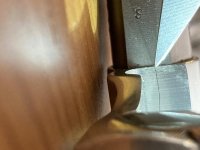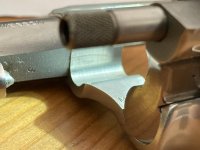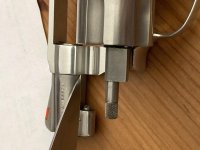Sir, thank you for addressing my question. Considering that my memory is a bit clouded due to an accident related concussion, I believe that I remember posts addressing both premature wear AND cracked frames.
I am asking since I have an opportunity to act on some Airweights, but I don't want to buy a revolver with a severely limited service life.
For those that "misread" my initial inquiry, I have more than enough semi-autos that can be utilized for a tactical application, where needed.
I shoot J-frames considerably, but now only have one Airweight and its a 638-3 I've had since 2008. Despite comments by the lock moaners, it has a lock yet is the most accurate snub nose gun I own. It's been fired considerably, though almost entirely with standard pressure cast bullet handloads using a 160 grain SWC. No sign of looseness or any other problem or "premature wear".
I had a Model 38 Airweight from the '70s in like new condition that I bought used more than ten years ago. Within a hundred rounds or so of standard pressure handloads, the frame cracked in the usual thin spot in the threaded portion under the rear of the barrel. S&W replaced the gun with another 638-3.
The same thing happened with a Colt Agent from the '60s. I bought this gun in what appeared to be well-used condition, though I didn't know the history or how much it had been fired or with what ammo. However, the gun was mechanically tight and timing was fine. I had fired several hundred cartridges in it when the frame cracked.
I don't believe any of these earlier alloy-framed guns were designed for extensive shooting and for that reason wouldn't buy another. I still have a '57 Colt Cobra (aluminum frame) that continues to work well, but I don't shoot it a lot.
My steel J-frame guns and a '55 Colt Detective Special have all held up very well, including a couple of S&Ws that I bought new well over forty years ago. I think the newer S&W Airweight are more robust revolvers than the older ones and see no reason not to shoot them regularly, but my comments are based on experience using standard pressure ammo.
As for the difference in weight between alloy-framed guns and steel-framed versions - the weight discrepancy is obvious when these guns are unloaded. When loaded, it's hard to see much of an advantage, particularly if you're using the 158 grain bullets these guns were designed for.



